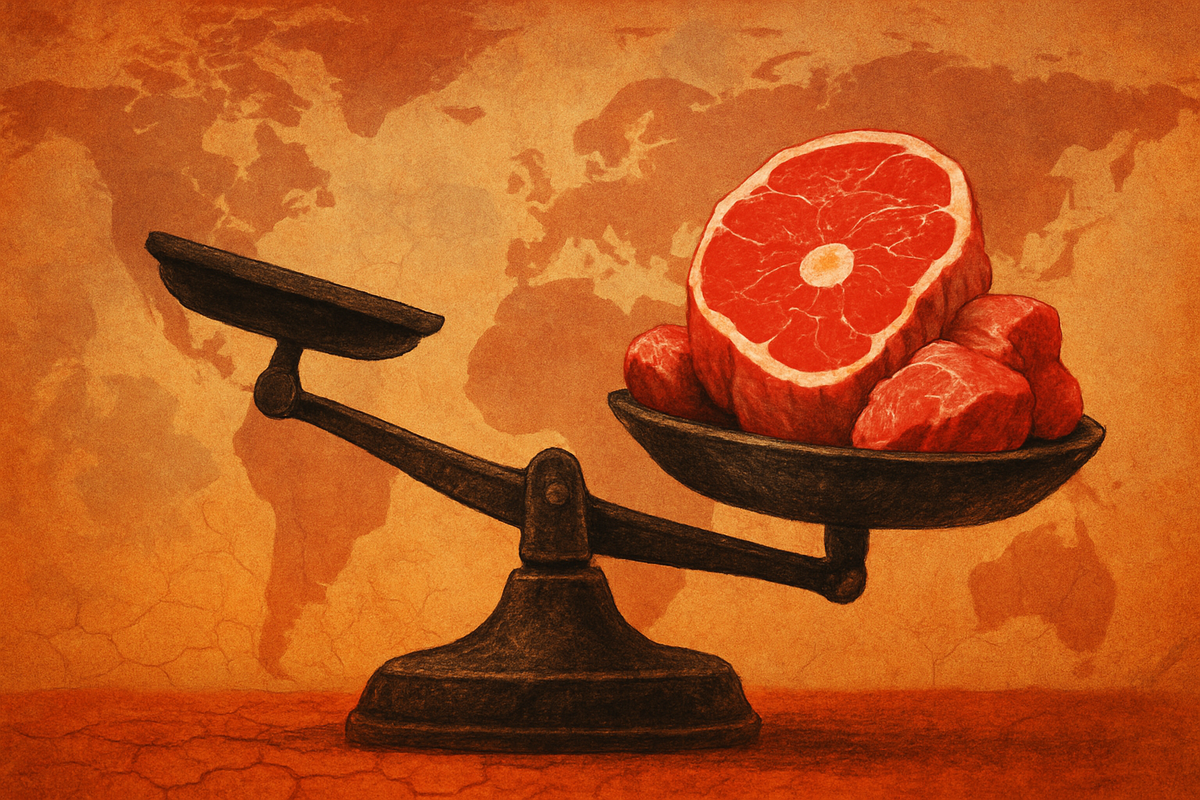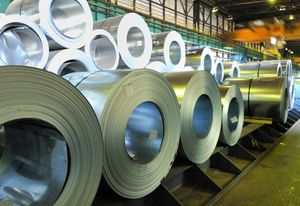
The global meat market is currently experiencing an unprecedented surge in prices, reaching historic highs as of October 2025. This significant rally is primarily driven by a confluence of factors, most notably severely tight beef supplies and elevated sheep-meat prices. For consumers, this translates directly into significantly higher grocery bills and a noticeable shift in purchasing habits, as many are forced to seek more affordable protein alternatives. In the broader market, agribusinesses are grappling with tightening margins, while exporting nations are capitalizing on the supply deficit, and the alternative protein sector is witnessing accelerated growth.
This record inflation in meat prices signals a critical juncture for the global food industry, highlighting the delicate balance between supply, demand, and external pressures. The immediate implications are far-reaching, impacting household budgets worldwide and prompting strategic adjustments across the entire meat production and distribution chain. As prices continue their upward trajectory, the market is bracing for sustained volatility and a potential reshaping of consumer preferences and industry landscapes.
Unpacking the Record Rally: Drought, Disease, and Demand Fueling Price Spikes
The current surge in global meat prices to record levels is a complex phenomenon, rooted in a series of interconnected events and persistent market pressures. As of October 2025, the FAO Meat Price Index has not only continued its upward climb but has set new all-time highs, reflecting a substantial year-over-year increase. Beef prices, in particular, have reached levels not seen in over six decades, with producer prices hitting approximately $6.9 per kilogram in September 2025.
The primary catalyst for this unprecedented rally is the severe contraction of cattle herds globally. The United States, a major beef producer, is facing its lowest cattle numbers since 1951. This critical shortage stems from prolonged and widespread droughts that have decimated pasture quality, forcing ranchers to incur higher feed costs or liquidate their herds. Consequently, U.S. slaughter rates have declined significantly, with forecasts predicting a substantial drop in fed cattle slaughter for 2025. Efforts to rebuild herds are hampered by strong feeder cattle prices, incentivize producers to sell rather than retain heifers for breeding. Beyond the U.S., stringent animal welfare regulations in the European Union and disease outbreaks, such as the New World Screwworm in Mexico, have further constrained global beef supplies. Simultaneously, sheep-meat prices have also been on a consistent upward trend, driven by tight export supplies from Oceania, with a greater volume being directed to high-value markets like the United Kingdom and the United States. Experts anticipate these prices will continue to climb, potentially peaking in 2026.
Despite these soaring prices, global demand for beef, particularly from robust markets like the United States and China, remains remarkably strong. China, propelled by rising household incomes, has emerged as the world's largest beef importer, further intensifying demand pressures. This persistent demand, coupled with constrained supply, creates a powerful upward force on prices. Adding to the complexity are increased production costs across the board. Rising feed costs, exacerbated by poor crop yields due to extreme weather and global supply chain disruptions, directly impact the economics of raising livestock. Labor shortages in processing plants and escalating operational expenses further contribute to the higher prices observed throughout the entire supply chain.
Initial market reactions have been varied but generally reflect a sense of urgency and adaptation. Smaller meat processors are struggling to secure raw materials, leading to tighter profit margins. Agribusinesses are exploring cost-cutting measures and considering mergers and acquisitions to consolidate operations and secure supply. Global trade dynamics are also shifting, with exporting nations like Brazil (B3: BRFS3) and Australia (ASX: AAC) capitalizing on the supply constraints in other regions, redirecting their exports to meet surging demand in Asia and Europe. This period of high prices and constrained supply is proving to be a significant test for the resilience and adaptability of the global meat industry.
Navigating the Market: Winners and Losers in the Meat Price Surge
The unprecedented surge in global meat prices is creating a distinct bifurcation within the market, establishing clear winners and losers among public companies and industry stakeholders. This environment demands strategic agility and robust supply chain management to either capitalize on opportunities or mitigate significant risks.
On the winning side, major meat exporters in regions less affected by herd reductions or disease outbreaks are experiencing a significant boon. Companies like JBS S.A. (B3: JBSS3) and Marfrig Global Foods S.A. (B3: MRFG3), both prominent Brazilian meatpackers, are well-positioned to benefit. Brazil has seen a substantial increase in beef exports, redirecting supply to meet the surging demand from Asia and Europe, filling the void left by tighter supplies from the U.S. and other regions. Australian agricultural companies involved in beef and sheep-meat exports, such as Australian Agricultural Company (ASX: AAC), are also likely to see increased revenues and market share, as they can command higher prices for their products in a supply-constrained global market. These companies benefit directly from the strong global demand and their ability to maintain or increase production amidst widespread shortages. Additionally, companies specializing in meat alternatives, such as Beyond Meat (NASDAQ: BYND) and Impossible Foods (privately held), are poised for growth. As traditional meat prices soar, consumers are increasingly seeking more affordable and sustainable protein options, driving demand for plant-based products and accelerating the expansion of this market segment.
Conversely, companies heavily reliant on domestic beef and sheep-meat supplies, particularly in regions experiencing significant herd contraction like the United States, face considerable challenges. U.S. meatpackers such as Tyson Foods, Inc. (NYSE: TSN) and Pilgrim's Pride Corporation (NASDAQ: PPC), while diversified, will likely contend with higher input costs for beef, potentially squeezing their profit margins. Their ability to pass these increased costs onto consumers without significantly impacting demand will be a critical factor in their performance. Retailers and restaurant chains that have a high proportion of beef on their menus, like McDonald's Corporation (NYSE: MCD) or Darden Restaurants, Inc. (NYSE: DRI), may also see a decrease in profitability if they absorb some of the price increases or a decline in customer traffic if they pass them on. Smaller, independent butchers and local meat processors are particularly vulnerable, struggling to compete for scarce raw materials at inflated prices, which could lead to closures or consolidation within the industry. Companies involved in the animal feed industry, while potentially benefiting from higher feed prices, might also face reduced demand from ranchers who are liquidating herds rather than feeding them.
The impact extends beyond direct meat producers. Logistics and cold chain companies might see increased revenue from higher-value shipments but could also face challenges with increased transportation costs and potential disruptions in supply routes. Ultimately, the companies that demonstrate resilience through diversified sourcing, efficient operations, and an ability to adapt to shifting consumer preferences will be the ones that navigate this volatile market successfully.
Wider Significance: Reshaping the Global Food Landscape
The current surge in global meat prices is more than just a temporary market fluctuation; it represents a significant inflection point that is reshaping broader industry trends, impacting supply chains, and potentially influencing future regulatory and policy decisions. This event underscores the growing vulnerability of the global food system to climate change, geopolitical factors, and economic pressures.
This crisis fits into a broader trend of increasing volatility in commodity markets, driven by climate change-induced extreme weather events. The prolonged droughts in key cattle-producing regions are a stark reminder of how environmental factors can directly disrupt agricultural output on a massive scale. This situation highlights the urgent need for more resilient and sustainable farming practices, including water conservation and drought-resistant feed crops. The ripple effects extend beyond direct competitors, impacting allied industries such as animal feed producers, veterinary services, and agricultural technology companies. Furthermore, the sustained high prices are accelerating consumer shifts towards alternative proteins, a trend that was already gaining momentum due to health, ethical, and environmental concerns. This could lead to increased investment in plant-based and cultivated meat technologies, further diversifying the protein market and potentially reducing reliance on traditional livestock farming in the long term.
Regulatory and policy implications are also coming to the forefront. Governments may face pressure to implement measures to stabilize food prices, such as subsidies for producers, import tariff adjustments, or even strategic food reserves. There could be increased scrutiny on agricultural land use, water management policies, and animal welfare regulations, especially if these are perceived to contribute to supply constraints. International trade agreements could also be re-evaluated to ensure more robust and diversified supply chains for essential food commodities. Historically, similar periods of high food prices, such as the 2007-2008 world food price crisis, have led to social unrest and significant policy shifts, serving as a cautionary tale for policymakers today. While the current situation is specific to meat, the underlying drivers of supply chain fragility and demand shifts bear striking resemblances.
The event also highlights the interconnectedness of the global economy. Trade policies, such as the non-renewal of U.S. beef export licenses to China, have immediate and measurable impacts, redirecting trade flows and benefiting other exporting nations. This underscores the importance of stable and predictable international trade relations for food security. The long-term significance of this price surge lies in its potential to fundamentally alter consumer diets, accelerate technological innovation in food production, and drive a global re-evaluation of agricultural resilience and sustainability.
What Comes Next: Navigating Volatility and Innovation
The trajectory of global meat prices in the short and long term will be dictated by a complex interplay of environmental recovery, economic policies, and evolving consumer behavior. In the short term, prices are likely to remain elevated, with continued volatility. The rebuilding of cattle herds, particularly in the U.S., is a multi-year process, meaning tight beef supplies will persist well into 2026 and potentially beyond. This will keep upward pressure on prices, especially for premium cuts. Sheep-meat prices are also projected to continue their ascent, possibly peaking in 2026 before any significant moderation. Consumers will likely continue their shift towards more affordable protein options, including poultry, pork, and increasingly, plant-based alternatives. Retailers and food service providers will need to adapt menus and product offerings to reflect these changing consumer preferences and cost structures.
Looking further ahead, several strategic pivots and adaptations will be required across the industry. Livestock producers may need to invest in more resilient farming techniques, including advanced irrigation systems, drought-resistant feed, and improved herd management strategies to mitigate future climate-related risks. Meatpackers and processors will need to diversify their sourcing geographically and explore new technologies to improve efficiency and reduce costs. There will be significant market opportunities for companies innovating in sustainable agriculture, alternative protein development, and supply chain optimization. Investment in vertical farming, precision agriculture, and cellular agriculture (cultivated meat) is expected to accelerate, as these technologies offer potential solutions to reduce reliance on traditional, resource-intensive livestock farming. Companies that can offer cost-effective, high-quality protein alternatives will see substantial growth.
Potential scenarios and outcomes include a sustained period of higher meat prices, leading to a permanent shift in dietary habits in developed nations and increased food insecurity in developing regions. Alternatively, significant technological breakthroughs in alternative proteins or a rapid recovery in livestock populations could lead to price stabilization, though a return to pre-surge levels seems unlikely in the near future. Geopolitical stability and effective international cooperation on food security and climate change will also play a crucial role in shaping the long-term outlook. The market will likely become more fragmented, with premium, sustainably sourced meat commanding higher prices, while a growing segment of consumers opts for more economical and plant-based options.
Wrap-up: A New Era for the Global Meat Market
The unprecedented surge in global meat prices to record highs marks a pivotal moment for the food industry and global consumers alike. The key takeaways from this event underscore the fragility of traditional food supply chains when confronted with compounding pressures from climate change, robust global demand, and escalating production costs. The immediate future points towards continued elevated prices, particularly for beef and sheep-meat, driven by the multi-year process of herd rebuilding and persistent supply constraints.
Moving forward, the market is poised for significant transformation. We can anticipate a sustained shift in consumer behavior towards more budget-friendly protein sources, including a notable acceleration in the adoption of plant-based and other alternative proteins. This will not only create new market opportunities for innovative food companies but also necessitate strategic adaptations from established meat producers and retailers. Investors should closely monitor companies demonstrating resilience through diversified operations, efficient cost management, and those actively investing in sustainable and alternative protein solutions. The ability to innovate and adapt to both supply-side challenges and evolving consumer preferences will be paramount for success in this new landscape.
Ultimately, this period of high meat prices serves as a potent reminder of the interconnectedness of our global food system and the critical need for long-term strategies focused on sustainability, resilience, and diversification. The lasting impact will likely be a more diversified global protein market, driven by both economic necessity and environmental consciousness. What investors should watch for in the coming months are signs of herd rebuilding progress, the pace of innovation in alternative proteins, and any regulatory interventions aimed at stabilizing food prices or promoting sustainable agricultural practices. The era of cheap meat may be drawing to a close, ushering in a new chapter for how the world produces, consumes, and values its protein.
This content is intended for informational purposes only and is not financial advice.







